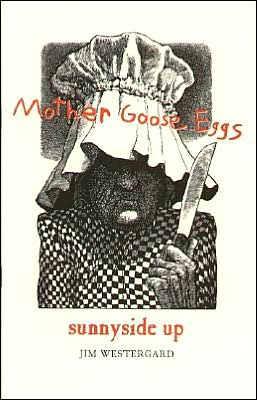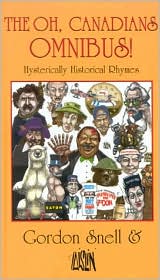Mother Goose Eggs: Sunnyside Up
'Many wood engraving books are collections of previously executed work; relatively few are new creations. This must be one of an even smaller handful that is truly engraving-led and breaks new ground. It is a triumph. Jim Westergard sees making a book as quite a different thing from making a print (or two, or, in this case, fifty).'—William Rueter—Parenthesis
Search in google:
When I began to write this book, I was thinking very much about the geometry of short story collections. Many modern short story collections have a larger structure that provides continuity and makes them read like novels. They are conceived as whole books and have a unity beyond a simple miscellany of tales. Characters or ideas progress through each subsequent story until the final story provides a resolution, or at very least a point of perspective from which to look back and re-evaluate the previous stories. Frequently these collections have a cyclical geometry, where ideas introduced in early stories are resolved or recast in the final story. I wanted to produce something that shared many of these qualities. Each chapter was to be as self-contained and whole as any short story. Like a story cycle, each story would cast a new light on the ones that preceded it, and promote novel like unity of themes. What I did not want to write was a cyclical book, in which the final story is the final word, a story with more authority than all others, one that casts a sort of judgement on the rest. I was aiming for something more ambiguous than that. From the start, my intention was to write a book on the subject of perspective, a book in which any one of the stories could be taken as the starting point or the endpoint of the collection, in which each was capable of exerting that conclusive judgement usually the sole prerogative of the final chapter. I wrote a book based not on the geometry of the circle, but on the geometry of the dodecahedron. I'll get back to that, but first a word from the French. This book is constructed on mildly Oulipien principles, that is on the principlesof the Ouvroir de la Litt[e']rature Potentielle (OuLiPo). OuLiPo is a group of mostly French authors who create literature based on highly arbitrary constraints of their own making. Amongst the most famous of these are Georges Perec's La Disparition, a novel written entirely without the letter E and Raymond Queneau's Exercises de Style in which the same object is described over and over in different rhetorical styles. The most obvious model for A Frame for Frames is another Oulipien text -- Italo Calvino's Se Una Notte D'Inverno un Viaggiatore, a novel composed of a conspiracy frame story and ten first chapters of hypothetical books. The arbitrary constraints I put on myself while writing A Frame for Frames emerge from the geometry of a dodecahedron. I envisioned a book in which each of the twelve chapters or stories represented a face of the dodecahedron. A dodecahedron's faces are pentagonal, each a five sided polygon. In A Frame for Frames these sides represent a relationship to an adjacent story. This was the first constraint. Each story must refer to or be referred to by each of the five stories adjacent to it. These references to and from adjacent stories provide the shifting perspectives of this book. Any face of the dodecahedron may be taken as a starting point from which to evaluate the adjacent sides. A dodecahedron has twenty vertices, points where three sides meet. In A Frame for Frames these vertices are represented by certain repetitions and recurrences in each of the three stories that meet in these points. If the elements that represent the vertices were extracted and placed in the order of their first appearance, they would form another text of sorts, which might provide another perspective for evaluating the whole. The order in which the stories unfold is somewhat arbitrary. Any one could have been the first story, but once that choice was made their sequence was governed by a predetermined pattern. I considered only two patterns. The most obvious was the 'orange peel' sequence, using the pattern by which you can remove the peel of an orange in a single strip, by proceeding around it in a spiral. This would have produced a spiralling away from the themes and subjects of the first story to the point where the last story had no edges or vertices in common with it. Instead I went around two strips around the top and bottom hemispheres (or perhaps more properly hemihedrons), but left the top and bottom pentagons until the end. This saved one reference to or from each of the first five stories until the eleventh story, a goal which is supported by no other constraint than the author's desire for another kind of unity. -- Paul Glennon
Looking for a place to lay the blame for the cruelty, violence and abuse in the world? Why not blame it all on Mother Goose? Violence, cruelty and abuse are scattered throughout those nursery rhymes of hers. \ I have an early memory of a frightening nursery rhyme, about a neglected baby, left up in a tree, who would come crashing to the ground when the branch broke. Then there was the one about going to sleep and maybe never waking up.\ The little darlings can't distinguish fact from fiction at that age; those were real people there, having terrible things happening to them! No wonder some of those little nursery residents grew up disturbed, deviant or traumatized.\ Later, when the parents were reading the nursery rhymes to their own children, they realized that their parents had done some editing, and they began to edit too. They also noticed some had never been read at all.\ Mother Goose dates back to the days when childhood did not generate fond memories. The rhymes were often meant to teach the kiddies how to participate in a cruel world. A few of these nursery rhymes have violent, brutal and bizarre content. There are also, among these, a couple that contain some good advice.\ Let's pretend the characters in these nursery rhymes were real people (in some cases they were) and that they're now retired. How would their years alter their faces?\ This book is not a serious study of children's literature and makes no claim to historical or literary accuracy.\ The two books used as references for these nursery rhymes were [i]The Real Mother Goose[r], published by Checkerboard Press, 1991, and [i]The Annotated Mother Goose[r] by William andCeil Baring-Gould, published by Bramhall House, 1962.\ Mother Goose, the source of delightful childhood rhymes and lessons, laid a few eggs around the nursery, sunny side up. Bon appétit!
\ Quill and Quire'Jim Westergard may not be the first to invest children's standards with modern sensibilities (think Jon Scieszka's The True Story of the 3 Little Pigs or James Finn Garner's Politically Correct Bedtime Stories), but he achieves a special blend of sarcasm and poignancy in Mother Goose Eggs, Sunnyside Up. The book pairs 25 Mother Goose nursery rhymes (many of which include an unfamiliar and disturbing stanza or two) with Westergard's engravings. With tongue in cheek, Westergard plays up the cruel nature of many classic nursery rhymes -- spousal abuse in "Tom, Tom, of Islington", child neglect in "Hush a by Baby", and religious oppression in "Goosey, Goosey, Gander", for example. He illustrates each rhyme with a two-colour portrait and a larger, black-and-white depiction of the young protagonist as they might have aged -- which is usually not very well.'\ \ \ \ \ \ Scene Magazine'Mother Goose Eggs is thoughtful and expertly researched. A reader may pause to consider what life was like when the original poems were written. They may have been historical accounts of the tribulations that different societies and cultures endured in the past. Westergard has put doubt into our minds as to the innocence of children's stories and parents everywhere should be on guard!'\ — Andrea Mackay\ \ \ \ vue weekly'As Bruno Bettelheim explained in The Uses of Enchantment, nursery rhymes and fairy tales confront children head-on with basic human predicaments and existential dilemmas. They exaggerate and distort but they do not try to hide the filthy underbelly of the world -- people's backs are broken, mice are mutilated. Westergard has great, socially incisive fun by taking the rhymes at their straight-faced literal level, thereby backhandedly pointing to our hyper-protective culture of parenting. He underscores the daftness of making strictly deterministic connections between what is read in childhood and one's life as an adult.'\ — Christopher Wiebe\ \ \ \ \ \ Canadian Book Review Annual'Great attention has been taken with the production of the book. It is printed on wonderful cream paper stock, with a special type font and decorated initial letters, as well as carefully laid-out pages. The original wood engravings are well-executed portraits. However, while some adults may appreciate the bizarre dark humour, this is not a book to share with children.'\ — Alison Mews\ \ \ \ \ \ Edmonton Journal'There is a laugh on every page.'\ — Marc Horton\ \ \


